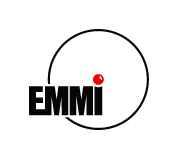Sprecher
Beschreibung
With their successful application of nuclear magnetic resonance NMR to investigate the structure of atoms in liquids and solids Felix Bloch and Edward Mills Purcell (Nobel prize 1952) opened new ways to study local aspects in solids via the hyperfine interaction of a nuclear moment with extra-nuclear fields. While for roughly half the elements no appropriate nuclei are available because of either spin-zero or spin-1/2 nuclei, respectively, one finds nuclei in isomeric states with spins suitable not only for magnetic dipole but also for electric quadrupole interaction almost over the whole periodic table. The development of adequate techniques to study hyperfine interactions like Mössbauer spectroscopy, Perturbed Angular Distribution and/or Correlation, and radiation-detected-NMR adapted to the various half-lives of the isomers lead to the field of nuclear solid-state physics. Due to its very nature, the restricted range of the hyperfine interaction in combination with the high sensitivity for detecting nuclear radiation, materials studies using isomers are ideal to investigate local structures on highly isolated atoms in solids with extremely low concentrations.
Among the key words for topics in solid-state physics are fullerenes (e.g. F-19), point defects in metals and insulators (e.g. Cd-111 and Sn-119), charged defect centers in semiconductors (e.g. Cd-111), local magnetic moments (e.g. Fe-54), where the study of the hyperfine interaction of isomeric nuclei greatly contributed to an improved understanding. In return, the advanced understanding of extra-nuclear fields in solids resulted in reliably determining nuclear moments by measuring the hyperfine interaction, thus contributing to key issues in nuclear structure like high-spin isomers (in e.g. Gd-147, Rn-211 and Rn-212).

